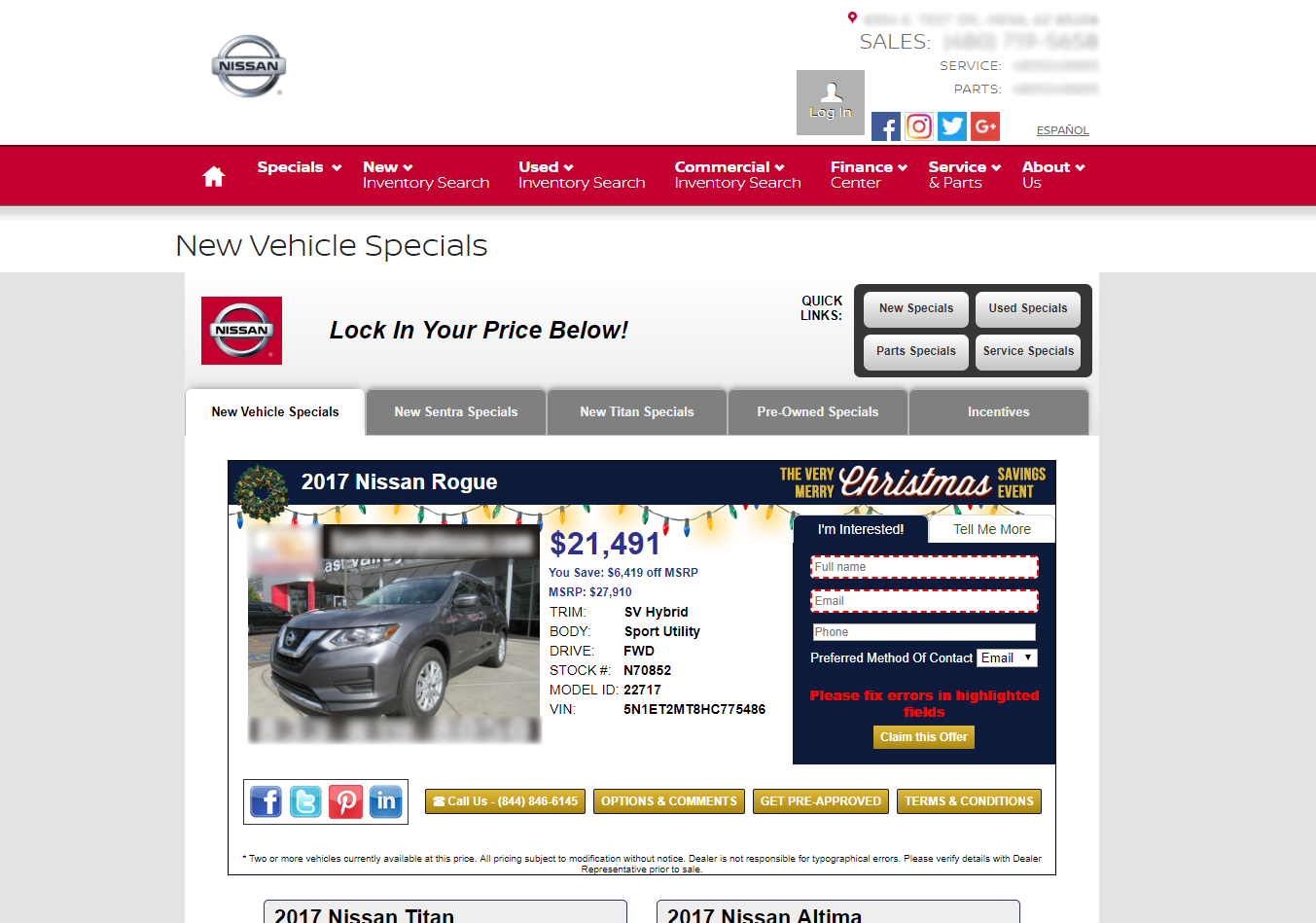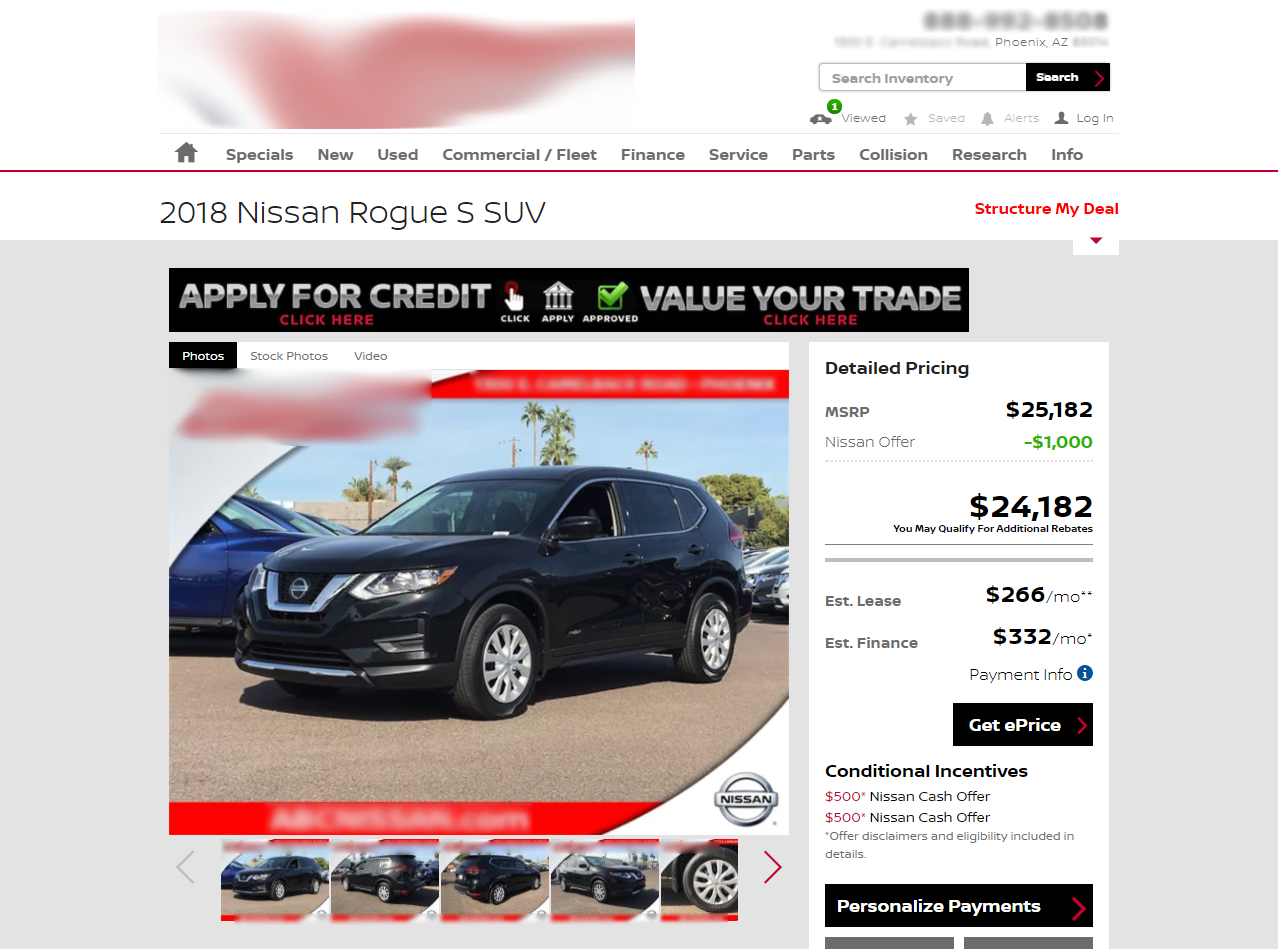Let’s imagine that a shopper in your area is looking to buy a new car. Before they come to visit your store or the store of one of your competitors, they are probably going to seek out information on their own.
Before they type anything into the search bar, we can assume that they are hoping to answer at least one of the following questions…
- What are the make, model and trim options?
- What is the pricing information?
- Where can I buy?
- What am I supposed to do next?
Most likely, in this stage of the buying process, they would be most interested in some sort of pricing information. Because of this, the shopper is going to search for a lease, hoping to learn what it costs to lease a new vehicle.
Take this example, the shopper is looking for a Nissan Rogue, so they decide to search “Nissan Rogue Zero-down lease.” In this situation, the area is narrowed to dealerships near Phoenix, AZ. Here is the top PPC Result:

Fig. 1.1
Odd’s are, this ad would perform poorly based on what this shopper’s original search was. This ad is doing nothing to satisfy the ad intent and offers almost no valuable information to the shopper. No model trim options, very weak call-to-actions that are not specific to this shopper’s intent and most importantly, no transactional data or mention of lease offers of any kind!
However, having a PPC ad with relevant, transactional data is only half the battle. Creating a specific landing page for your ads, ensure that’s shoppers are sent to relevant, model-specific pages when they click on your ad. Here is where the shopper is sent when the click on the ad shown in Fig. 1.1:
 Fig. 1.2
Fig. 1.2
We learn almost as little from this landing page as we did from the ad shown in Fig. 1.1. While this page does give us a price for a Nissan Rogue, it gives us no information on any leasing options. Neither the ad nor the landing page satisfies the search intent and this would likely leave the shopper frustrated with this dealer.
Let’s take a look at another example, here is another PPC ad from the same search:

Fig. 2.1
In terms of transactional data, this ad is better. It gives pricing some pricing information but not the zero-down lease the shopper originally searched for. Let’s look at this ad’s landing page:

Fig. 2.2
The ad shown in Fig. 2A advertised a lease of $239/month for a $49 down payment. This landing page shows a lease for $266/month with no mention the down payment. Like the other dealership, this would likely leave the shopper either annoyed or confused. While they included the payment, neither the ad nor the page fully answered the shopper’s question.
In Summary:
- If you don’t include transactional data (lease price, finance payments, APRs, etc.) in your ads, they tend to fall flat or get overlooked.
- If you include transactional data in your ad that doesn’t match the transactional data on the landing page, it leaves shoppers feeling confused and cheated.
- Dropping shoppers on a homepage or a VDP where there is nothing relevant or matching the context of your ad creates a poor experience on your website.
How do I fix this?
Be specific, transparent and consistent from the time the ad is served to the time someone leaves your website. Fill your ads with relevant transactional data and drop shoppers on a model-specific landing page with valuable, relevant content. Lastly, make sure the offer in your ad is prominent on your landing page. You have 3 seconds to get their attention, don’t bury it in the page.
Are you suffering from these problems with paid search or are you new to paid search marketing? Dealer Teamwork can help! Contact sales@dealerteamwork.com for a demo of our revolutionary, dynamic paid search product to sign up.


 Fig. 1.2
Fig. 1.2

